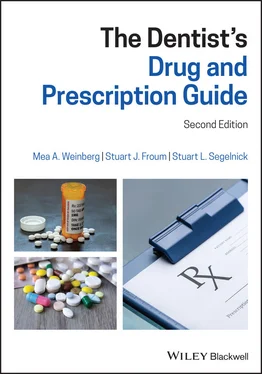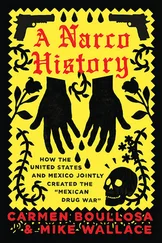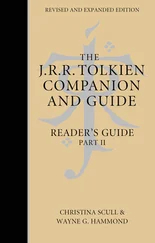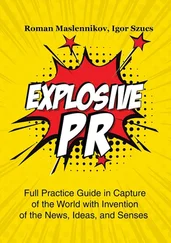25 Q. What is the definition of tolerance?
26 A. Tolerance is the development of resistance to the effects of a drug. Therefore, in order to achieve the desired response, more of the drug must be taken. Overdose is very common. Narcotics and alcohol are common examples of drugs that produce tolerance.
1 Aki, T., Heikkinen, A.T., Korjamo, T. et al. (2010). Modelling of drug disposition kinetics in in vitro intestinal absorption cell models. Basic and Clinical Pharmacology and Toxicology 106 (3): 180–188.
2 Becker, D.E. and Reed, K.L. (2012). Local anesthetics: review of pharmacological considerations. Anesthesia Progress 59 (2): 90–102.
3 Coleman, J.J. and Pontefract, S.K. (2016). Adverse drug reactions. Clinical Medicine 16 (5): 481–485.
4 Doogue, M.P. and Polasek, T.M. (2013). The ABCD of clinical pharmacokinetics. Therapeutic Advances in Drug Safety 4 (1): 5–7.
5 Fagerholm, U. (2007). Prediction of human pharmacokinetics – gastrointestinal absorption. Journal of Pharmacy and Pharmacology 59: 905–916.
6 Fujimoto, J.M. (1979). Pharmacokinetics and drug metabolism. In: Practical Drug Therapy, 1e (ed. R.I.H. Wang), 11–16. Philadelphia: J.B. Lippincott Company.
7 Gossel, T.A. (1998a). Pharmacology back to basics. US Pharmacist 23: 70–78.
8 Gossel, T.A. (1998b). Exploring pharmacology. US Pharmacist 23: 96–104.
9 Huang, W., Lee, S.L., and Yu, L.X. (2009). Mechanistic approaches to predicting oral drug absorption. AAPS Journal 11: 217–224.
10 Ito, S. (2011). Pharmacokinetics 101. Paediatrics and Child Health 16 (9): 535–536.
11 Leheny, S. (2017). ‘Adverse Event,’ Not the Same as ‘Side Effect.’ www.pharmacytimes.com/contributor/shelby‐leheny‐pharmd‐candidate‐2017/2017/02/adverse‐event‐not‐the‐same‐as‐side‐effect.
12 Lloyd, B.L., Greenblatt, D.J., Allen, M.D. et al. (1978). Pharmacokinetics and bioavailability of digoxin capsules, solutions and tablets after single and multiple dose. American Journal of Cardiology 2: 129–136.
13 Mayer, M.H., Dowsett, S.A., Brahmavar, K. et al. (2010). Reporting adverse drug events. US Pharmacist 35: HS‐15–HS‐19.
14 Pond, S.M. and Tozer, T.N. (1984). First‐pass elimination. Basic concepts and clinical consequences. Clinical Pharmacokinetics 9: 1–25.
15 Rieder, M. and Ferro, A. (2015). Adverse drug reactions. British Journal of Clinical Pharmacology 80 (4): 613–614.
16 Riedl, M.A. and Casillas, A.M. (2003). Adverse drug reactions: types and treatment options. American Family Physician 68: 1781–1790.
17 Robertson, D. (2017). First pass metabolism. Nurse Prescribing 15 (6): 303–305.
18 Shamna, M., Dilip, C., Ajmal, M. et al. (2014). A prospective study on adverse drug reactions of antibiotics in a tertiary care hospital. Saudi Pharmaceutical Journal 22 (4): 303–308.
19 Tamargo, J., Le Heuzey, J.Y., and Mabo, P. (2015). Narrow therapeutic index drugs: a clinical pharmacological consideration to flecainide. European Journal of Clinical Pharmacology 71 (5): 549–567.
20 Thomson, A. (2004a). Back to basics: pharmacokinetics. Pharmaceutical Journal 272: 796–771.
21 Thomson, A. (2004b). Variability in drug dosage requirements. Pharmaceutical Journal 272: 806–808.
22 VA Center for Medication Safety and VHA Pharmacy Benefits Management Strategic Healthcare Group and the Medical Advisory Panel (2006). Adverse drug events, adverse drug reactions and medication errors. Frequently asked questions. www.pbm.va.gov/PBM/vacenterformedicationsafety/tools/AdverseDrugReaction.pdf.
23 Weinberg, M.A. (2013). Fundamentals of drug action. In: Oral Pharmacology, 2e (eds. M.A. Weinberg, C. Westphal and J.B. Fine), 18–40. New Jersey: Pearson Education Inc.
24 Wesolowski, C.A., Wesolowski, M.J., Babyn, P.S., and Wanasundara, S.N. (2016). Time varying apparent volume of distribution and drug half‐lives following intravenous bolus injections. PLoS One 11 (7): e0158798. https://doi.org/10.1371/journal.pone.0158798.
2 The Prescription and Drug Names
2.1 Parts of a Prescription
1 Q. What are the different parts of a written prescription?
2 A.Heading:Prescriber's name, address, phone number, license number, Drug Enforcement Administration (DEA) number and NPI (national provider identifier) (the DEA number can also be located at the bottom of the prescription by the prescriber's signature)Patient's information (name, address, age, weight)Date of the order (must be written or it is not legal).Body:Rx symbolMedication prescribed (drug name, strength, and formulation) and quantity to be dispensedInstructions to the pharmacist. For example: Dispense 10 capsules.Closing:Signature (Sig): directions to the patientSignature of prescriberWhether or not substitution is permissibleNumber of refillsLabel (informs the pharmacist how to label the medication).
3 Q. What does “Rx” mean?
4 A. Rx is a symbol referring to “prescription.” Rx stands for the Latin word “recipe” or “take thou” or “take thus” or “to take.” Essentially, it is a command to take a specific compound.
5 Q. What does “Sig” mean?
6 A. Sig is an abbreviation for the Latin signatura, meaning “write,” “make” or “label.” These should always be written in English; however, prescribers sometimes use Latin abbreviations, e.g., “1 cap tid pc,” which the pharmacist translates into English as “take one capsule three times daily after meals.”
7 Q. Does the age of the patient need to be written on the prescription?
8 A. Yes. Generally, it is helpful to write in the age (in years) of the patient. For pediatric prescriptions, it is recommended to write in the age of the child if the patient is less than 12 years of age and the age in years and months if less than 5 years of age. Including the weight of the child is also helpful. For Schedule II drugs, it is mandatory to include the age of the patient on the prescription. The reason for writing the age of the patient is that in some cases dose adjustments may be needed.
9 Q. What is the NPI?
10 A. NPI stands for national provider identifier. It is an identification number given to healthcare providers by the CMS (Centers for Medicare and Medicaid Services). Healthcare providers must apply for an NPI number through an application process on the CMS website. Health practitioners need to have this number in order to receive reimbursement from insurance companies and to prescribe medicines.
11 Q. What does the label box at the bottom of the prescription mean?
12 A. Any information about the medication to be dispensed is provided on the label that is affixed to the drug container.
1 Q. When does a brand name drug become generic?
2 A. A brand name drug can become generic when the patent for that drug expires. Once the brand name drug goes off‐patent, several drug companies can begin to manufacture a generic equivalent drug. In the United States, one company is given 180 days of exclusivity to manufacture a generic version of a drug. After 180 days, other manufacturers of generic medications can then start to make their own generic form of the drug. For example, the patent on Celebrex® expired in 2013. Until 2013, Celebrex was not available in a generic form ( www.fda.gov/Drugs/DevelopmentApprovalProcess/ucm079031.htm).
3 Q. At the bottom of the prescription there is a section that says “dispense as written” or “substitution permissible.” What is the difference between a generic drug and a brand name drug?
4 A. A generic drug is manufactured and distributed usually without a patent. However, the generic drug may still have a patent on the entire formulation but not on the active ingredient. A drug that has a trade (brand) name is protected by a patent whereby it can only be manufactured and sold by the company holding the patent. Once the patent expires (between seven and 12 years) on a brand name drug, the generic form becomes available (Welage et al. 2001).
Читать дальше












